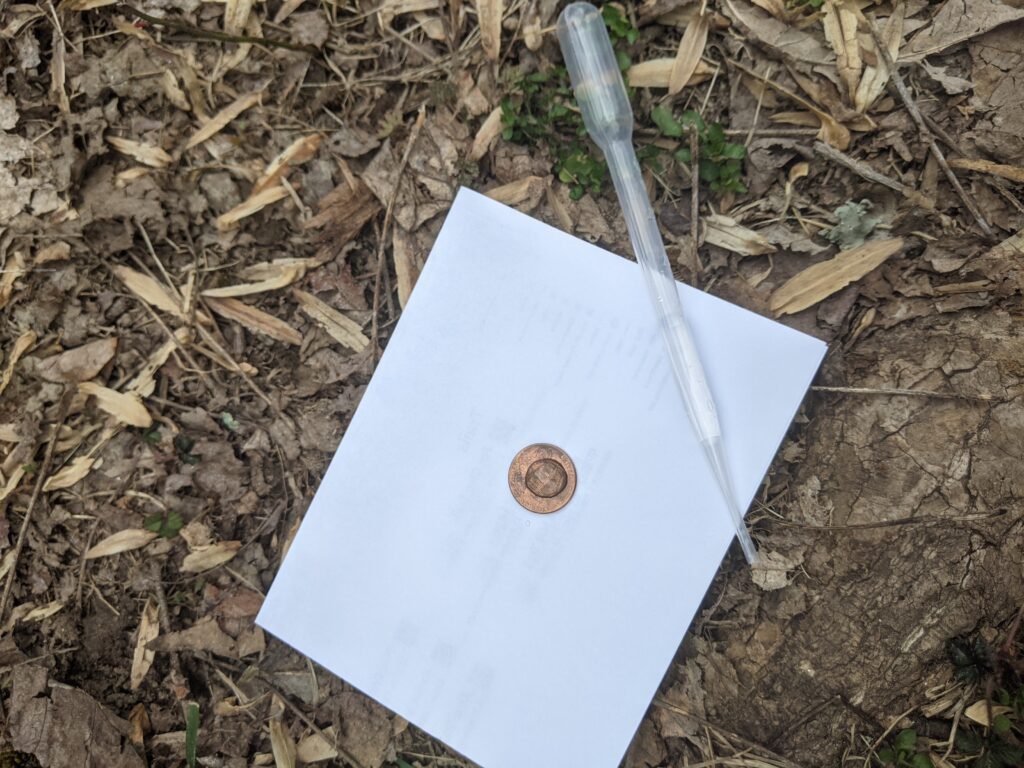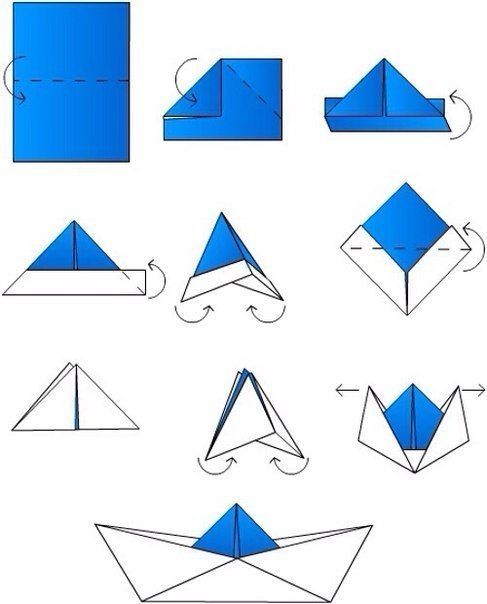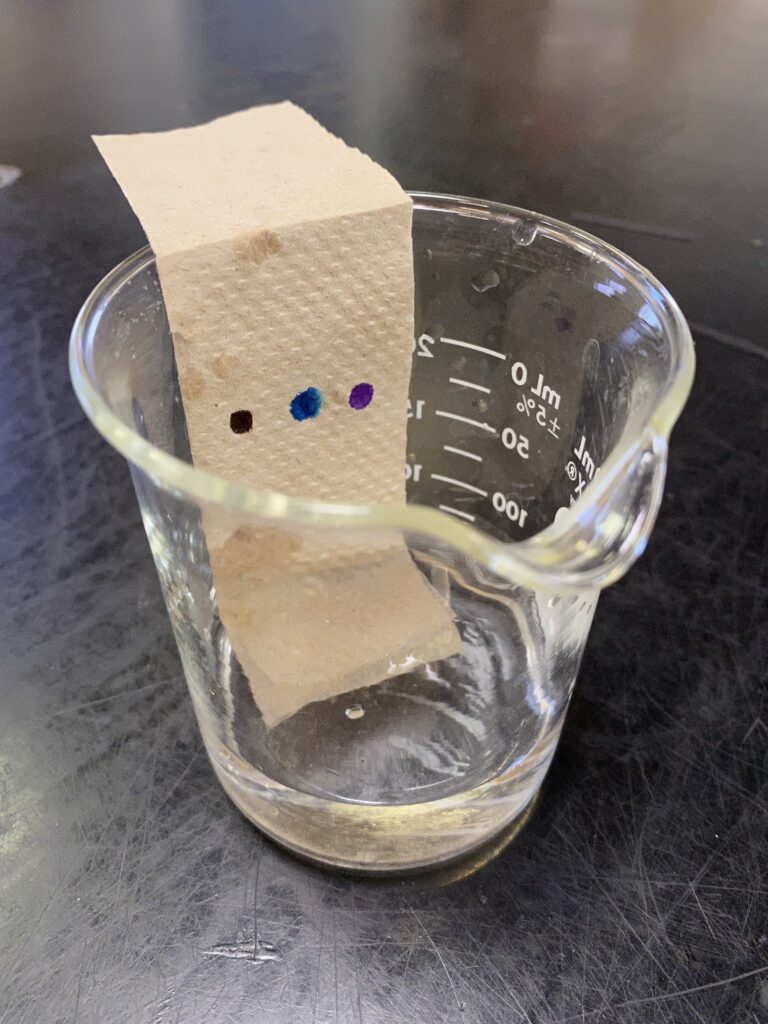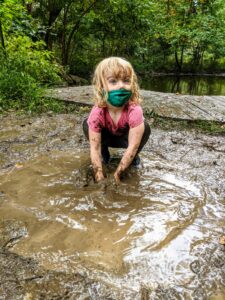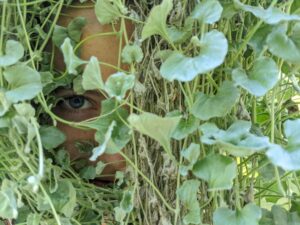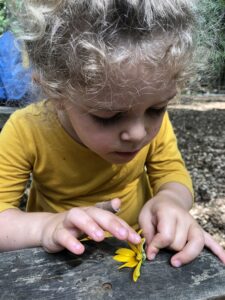Together with a favorite grown-up, Sprouts will discover and explore the wonders of nature through sensory focused classes. This program for little ones ages 2-3 years old and features walks, art, music and stories as part of the hands-on, emergent learning approach beloved in our Nature Preschool. It is a great way for your child to grow their roots in nature-based learning.
Tag Archives: nature
Sprouts
Together with a favorite grown-up, Sprouts will discover and explore the wonders of nature through sensory focused classes. This program for little ones ages 2-3 years old and features walks, art, music and stories as part of the hands-on, emergent learning approach beloved in our Nature Preschool. It is a great way for your child to grow their roots in nature-based learning.
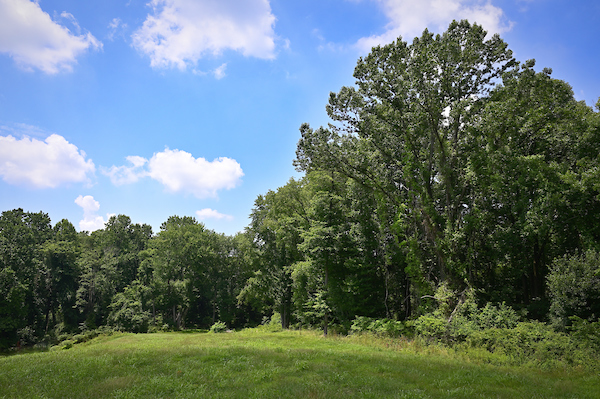
Preservation of 24 acres of green space
Join us along with elected officials, community leaders, and neighbors
in celebration of 24 acres of green space in Upper Roxborough.
Location:
Higher Ground Church International
7860 Eva Street | Philadelphia, 19128
Rain or Shine
Breakfast Refreshments
Read about the donors who made this possible HERE.
The Real March Madness: Outside in Nature
It’s hugely exciting times for college hoops fans, awash in basketball games where they breathlessly wait to see if, oh, the Providence Friars can hold off the South Dakota State Jackrabbits. (OK, Villanova vs. Delaware is pretty cool.) Some $3.1 billion will be bet– DOUBLE what was spent only last year– and almost 40 million Americans will fill out those brackets.
Over 19-year-old kids playing hoops. Welcome to March Madness.
Meanwhile, receiving no fanfare at all, nature in March is simply exploding. Flowers have already begun opening, an elegant parade blooming in an orchestrated sequence begun back in February when skunk cabbages poked through the mud in wet areas, purple mottled hoods protecting a Sputnik-shaped flower. Just this week, the buds of red maples have popped to reveal tiny wind-pollinated flowers, little red spiders dangling from tree branches.
And along our Ravine Loop, as the photo above shows, the very first trillium of the season has poked out of the ground, and is thisclose to opening its flowers. Trillium is a native member of the lily clan, and this one goes by the evocative name toadshade– small toads can hide from the sun under its umbrella of leaves.
While snowdrops, crocuses, and daffodils have already sprung up on our lawns, our forests will soon be bursting with ephemeral wildflowers with names as evocative as the flowers are stunning: trout lily, Jack-in-the-pulpit, bloodroot, shooting star, Dutchman’s breeches, Solomon’s seal… With all apologies to our good friends at the Pennsylvania Horticultural Society, here’s the real flower show.
Meanwhile, migrating birds are undergoing their own rite of spring, flying through in progression, red-winged blackbirds and phoebes now, ruby-throated hummingbirds later. Waves of woodland warblers—tiny but unbelievably exquisite creatures wearing extraordinary coats of many colors—pass through like clockwork, pine and prairie warblers right now, blackpolls bringing up the rear at season’s end. And they are passing through in their breeding plumage, essentially wearing their Sunday best for us. Just Google Blackburnian warbler: is there a prettier animal anywhere?
And while some of these birds are staying for the summer, many are heading to nesting grounds far north of here– think Adirondacks and Canada– only visiting the region for a few days on their journeys north and south. Blink and they’re gone.
Those birds that nest here– cardinals and chickadees, titmice and robins– will be calling their love songs. One of my favorite sounds of spring is the first moment I hear a wood thrush. A cousin of the robin, the thrush’s song is like organ pipes or flute music: it is simply stunning, and stops me in my tracks every spring.
Butterflies soon begin awakening, mourning cloaks first, painted ladies soon, swallowtails in late April, and monarchs, just now leaving Mexico, much later.
Hibernators are crawling out of dens ready to start the new year. American toads will soon be crossing Port Royal Avenue on a dark and stormy night to get to their mating grounds up in the old reservoir across the road. And any day now I expect to see the first groundhog of the season, likely nibbling on roadside grass blades on that high bench of lawn along Hagy’s Mill Road, on the old Water Department land.
That’s the real March madness, that here we are, on the very first days of spring, having survived another wild and wooly winter, having been stuck in lockdown and freeze-down and ice-down, and we’re not betting on the first day a phoebe arrives from the tropics or the first day a mourning cloak butterfly flitters into view. We’re not inviting friends over for a beer to watch our crocuses unfold. We’re not sitting in lawn chairs to admire the red blush of flowers blooming across the maples on our street.
The struggle for me as an environmental educator is that, as a nation, as a culture, we have collectively decided, quietly but definitively, that college basketball matters. Just look at the air time, the ink space, the coaches’ salaries– in many states, athletic coaches are the highest paid state employee.
But nature? Not so much.
There’s another part of this madness: nature’s elegant springtime succession of flowers blossoming, trees leafing out, and birds migrating is in disarray because the symphony has a new conductor. While climate change is rearranging ancient patterns to an as-yet-unknown effect, the biggest experiment in the history of a planet…
… we’re glued to TV sets arguing over who’s better, Gonzaga or Baylor.
So the real flower show has already started outdoors, in your backyard, in a forest near you. But we’re stuck inside filling out brackets. And that’s just madness.
This Thursday, March 24 at 7 p.m, we will presents a virtual “Celebration of Spring,” with our naturalists sharing favorite spring birds, trees, reptiles, fungi, and wildflowers over Zoom. The event is free; register and receive the link here.
By Mike Weilbacher, Executive Director
The Nature of the Holiday Season
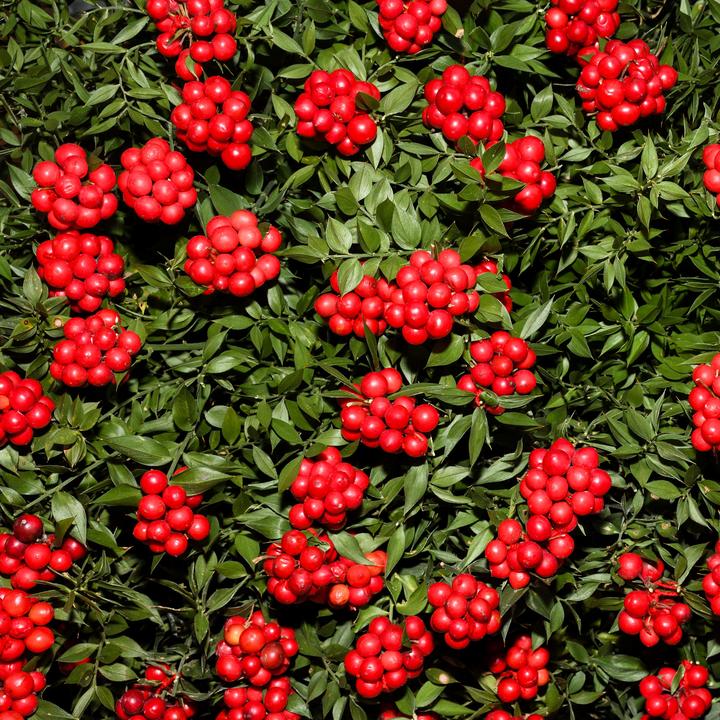
Winterberry holly, a native holly whose bright red berries feed many birds throughout the winter, and one of the many symbols of the season.
Winter formally arrives at 10:58 a.m. on Tuesday, December 21, that moment we call the winter solstice, both the shortest day and longest night of the year. Our staff– like thousands of generations of humans before us– will gather around a fire to mark that exact moment.
Still, for a naturalist like me, one of the pleasures of the holiday season is that we decorate homes and offices with innumerable nods to nature: evergreen boughs and trees, reindeer, snow, mistletoe, holly. Few holidays (save Easter, maybe) borrow so many symbols from nature. Ever wonder why?
Go back thousands of years to a time when there was little, if any, science, and everyone saw nature seeming to die around them—trees losing leaves, bushes bare, flowers gone. Animals were vanishing too, as winter is free of frogs, turtles, snakes, woodchucks, bats, butterflies, mosquitoes (yay!), and so much more. And while we now know that some creatures migrate south while others hibernate underground, the ancients didn’t know that. Animals seemed to just disappear. In winter, it was as if nature was being snuffed out.
The world was also getting darker this time of year, with the sun setting earlier, daylight dwindling, and each day colder and darker than the one before.
To explain the winter, cultures invented great stories to explain what was happening. So brave heroes were slaying dragons that were holding nature captive, or fearless animals were grabbing pieces of the sun and flying back to the north with light and heat. One common theme in these stories, and the celebrations that arose around the stories, was the loss of sunlight during winter, and burning large fires to urge the light to return. Persians burned big wooden effigies of Tiamat the dragon that slayed nature; Scandinavians burned massive bonfires so big the gods could see them.
And we moderns put lights up everywhere, literally lighting the darkness, responding to our inner ancient who worries the sun may not be coming back. Even Hanukkah, the season my family celebrates, resonates with the wish to light fires in an increasingly darkening world. Hanukkah (early this year and long over) formally begins on the new moon of December– the darkest night of the darkest month.
Another persistent theme in these holidays is evergreens. To the ancients, at a time where everything was apparently dying, evergreens seemed to possess a special magic that allowed them to beat winter. Whatever was happening to green plants was not happening to evergreens. So people began bringing these special plants into their homes, praying whatever magic the plants possess would infuse their homes as well.
Hollies are even better. They not only retain their deep-green deciduous leaves in winter—unlike most other leafy plants—but they also sport bright red berries to boot. Leaves AND fruit in winter—this plant is doubly powerful! Hollies ultimately became the symbol of the solstice, and when Christmas began being celebrated, that symbol transferred to the new holiday, lending Christmas its official red-and-green color scheme.
Which also explains mistletoe. In Europe, mistletoe is a rootless parasitic flowering plant growing high up in trees, clustered on branches, the plant using those branches to get sunlight. It’s evergreen in the winter, and better, has bright white (poisonous) berries in winter as well. To the ancients, especially those Druids of Stonehenge fame, mistletoe had magic on par with holly. It’s got leaves and fruits in the winter—and doesn’t even need soil. THAT’s magic.
Norse mythology holds that a spear made of mistletoe was used by that crazy god Loki to kill Odin’s son Baldur, whom he loathed. Frigg, Baldur’s devastated mother and the goddess who lent her name to Friday, cried tears that turned into mistletoe berries. The Norse then decreed that mistletoe would never again be used as a weapon, and Frigg herself would kiss anyone who passed beneath it. That story morphed into today’s tradition.
So while you decorate your home and office with nature’s symbols of the seasons, remember that so many of the symbols are based on terrified people unsure that nature would ever return in the spring.
Kind of like us this winter– terrified what omicron might do this winter, sick of two full years of pandemic holidays.
Those evergreens and candles, mistletoes and menorahs, were once talismans that hoped to revive nature in the spring.
Whichever holiday you celebrate, Christmas, Hanukkah, Kwanzaa, or even the Festivus of “Seinfeld” fame, joyous holidays to you and your family.
If you want to learn more about the traditions and symbols of the season, register for our special “Secrets of the Solstice” free online lecture on Tuesday, December 21 at 7:00 p.m.
By Mike Weilbacher, Executive Director
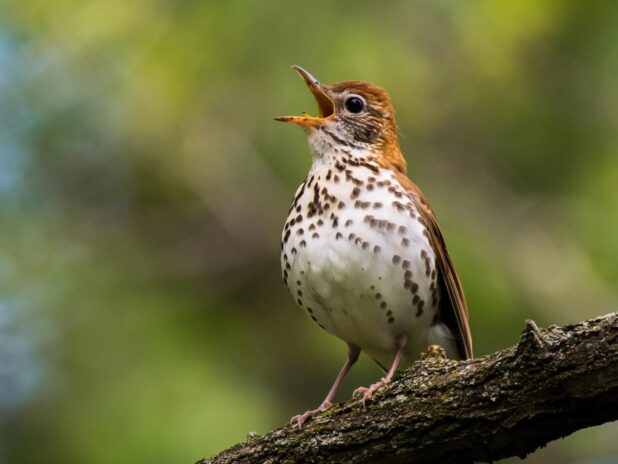
The Real March Madness
It’s hugely exciting times for college hoops fans, awash in basketball games where they breathlessly wait to see if, oh, the Grand Canyon University Antelopes beat the Iowa Hawkeyes, or if Creighton holds off UCSB, whatever that is. Wait, there is a Grand Canyon University?!
Some $1.5 billion will be bet legally over all the new gambling apps, almost 40 million Americans will fill out those brackets, gallons of newspaper ink will be spilled, and sports analysts will natter on for hours. “Bracketology” will trend on Twitter; coaches’ heads will roll.
Over 19-year-old kids playing hoops. Welcome to March Madness.
Meanwhile, receiving no fanfare at all, nature in March is simply exploding. Flowers have already begun opening, an elegant parade blooming in an orchestrated sequence begun back in February when skunk cabbages poked through the mud in wet areas, purple mottled hoods protecting a Sputnik-shaped flower. Just this week, the buds of red maples have popped to reveal tiny wind-pollinated flowers, little red spiders dangling from tree branches.
Sure, on our lawns there are snowdrops and crocuses and daffodils and tulips. But our forests will be bursting with ephemeral wildflowers with names as evocative as the flowers are stunning: trout lily, Jack-in-the-pulpit, bloodroot, shooting star, Dutchman’s breeches, Solomon’s seal… With all apologies to the Pennsylvania Horticultural Society (whose show is delayed and outdoors this year—great idea), here’s the real flower show.
Meanwhile, migrating birds are undergoing their own rite of spring, flying through in progression, red-winged blackbirds and phoebes now, ruby-throated hummingbirds later. Waves of woodland warblers—tiny but unbelievably exquisite creatures wearing extraordinary coats of many colors—pass through like clockwork, pine and prairie warblers right now, blackpolls bringing up the rear at season’s end. And they are passing through in their breeding plumage, essentially wearing their Sunday best for us. Just Google “Blackburnian warbler”: is there a prettier animal anywhere?
And while some of these birds are staying for the summer, many are heading to nesting grounds far north of here—think Adirondacks and Canada—only visiting the region for a few days on their journeys north and south. Blink and they’re gone.
Those birds that nest here—cardinals and chickadees, titmice and robins—will be calling their love songs. One of my favorite sounds of spring is the first moment I hear a wood thrush. A cousin of the robin, the thrush’s song is like organ pipes or flute music: it is simply stunning, and stops me in my tracks every spring.
Butterflies soon begin awakening, mourning cloaks first, painted ladies soon, swallowtails in late April, and monarchs, just now leaving Mexico, much later.
Hibernators are crawling out of dens ready to start the new year. Already, painted turtles are basking alongside Fire Pond near the front door of the Schuylkill Center, and American toads will soon be crossing Port Royal Avenue on a dark and stormy night to get to their mating grounds up in the old reservoir across the road. And any day now I expect to see the first groundhog of the season, likely nibbling on roadside grass blades, likely on that high bench of lawn along Hagy’s Mill Road, on the old Water Department land.
That’s the real March madness, that here we are, on the very first days of spring, having survived another wild and wooly winter, having been stuck in lockdown and freeze-down and ice-down, and we’re not betting on the first day a phoebe arrives from the tropics or the first day a mourning cloak butterfly flitters into view. We’re not inviting friends over for a beer to watch our crocuses unfold. We’re not sitting in lawn chairs to admire the red blush of flowers blooming across the maples on our street.
We’re not writing in our brackets which species migrates through first, the yellow-rumped warbler or the great crested flycatcher.
No, we’re debating whether David, the 16th-seeded Drexel Dragons, can slay the Goliath of Illinois, the Big 10 champions and top seed in the Midwest. (OK, here I relent: go Drexel!)
The struggle for me as an environmental educator is that, as a nation, as a culture, we have collectively decided, quietly but definitively, that college basketball matters. Just look at the air time. The ink space. Heck, coaches’ salaries—in many states, athletic coaches are the highest paid state employees.
But nature? Not so much. Sure, it gets a weekly high-quality hour on PBS, but how are those spring wildflowers doing? How are migrating birds faring? How are those monarch butterflies doing, actually on the bubble as a species? Where’s the Nature section of the city newspaper? The culture has spoken, and nature is far, far down our list.
There’s another part of this madness: nature’s elegant springtime succession of flowers blossoming, trees leafing out, and birds migrating is in disarray because the symphony has a new conductor. While climate change is rearranging ancient patterns to an as-yet-unknown effect, the biggest experiment in the history of a planet…
… we’re glued to TV sets arguing over who’s better, Gonzaga or Baylor.
So the real flower show has already started outdoors, in your backyard, in a forest near you. But we’re stuck inside filling out brackets.
That’s just madness.
—Mike Weilbacher, Executive Director

Water Nature Kit: At-Home Version
World Water Day is on Monday March 22. According to the United Nations, World Water Day “celebrates water and raises awareness of the global water crisis,” and this year’s theme is valuing water. Let’s celebrate our favorite liquid with these fun activities! (To learn more about World Water Day, and join in on the virtual celebration, visit https://www.unwater.org/worldwaterday2021/.)
Every Saturday, Nature Kits are given out on a first-come, first-served basis from 10:00 am-12:00 pm. Nature Kits focus on a different theme each week and are meant to be done along our trails and given back once completed. If you can’t make it out to the Center to pick up a kit, make sure to check our blog each week for ways to get in some nature exploration at home.
Activity #1: Drops on a Penny
There are many properties of water that make it unique. One of these is its high surface tension. Surface tension describes the strong “layer” at the top of water. It’s what makes it possible for the water strider to “walk” across the surface of water. But don’t take my word for it. Test it yourself!
Materials: penny, eyedropper, water
- Place a penny on a flat surface. (Choose wisely—the surface will get a little wet!)
- Use an eyedropper to slowly drip drops of water onto the penny.
- See how many drops you can add before the surface tension breaks.
Activity #2: What floats your boat?
Buoyancy is the force that allows things to float on water. A paper boat, for example, floats on water because the force of the boat pushing down towards the water is less than the force of buoyancy pushing up from the water. Test it out by making your own origami boat using the graphic instructions below.
Materials: 8.5×11 paper, bowl or sink full of water, coins/stones optional
- See if your boat can float in a tub of water or a sink.
- Place small stones or coins into your boat to see how much weight it can hold until it is no longer buoyant and sinks.
Activity #3: Water on the Move!
Water is the liquid form of H2O. As a liquid, it has some unique properties that allow it to move about. One way water moves is through capillary action. Simply put, capillary action is the ability of a liquid to move without—or even against—gravity through a small space. Water will wick, or draw itself upwards, because it likes to stick to itself and often also to the surface around it. See for yourself!
Materials: cup, 10×2 inch strip paper towel, washable markers, water.
- Get a cup and fill it with about 1 inch of water.
- Cut a 10×2 inch strip of paper towel.
- Use washable markers of varying colors to draw a line of circles across the 2 inch width about 5 inches up the strip.
- Fill in the circle.
- Drape the paper towel over the edge of the cup so that the bottom is just touching the water.
- Fold the top over the edge to keep it from falling in.
- Now wait and watch!
- Can you see the water moving up the paper towel?
- What happens when the water reaches the dots of marker ink?
—Patti Dunne, Environmental Educator
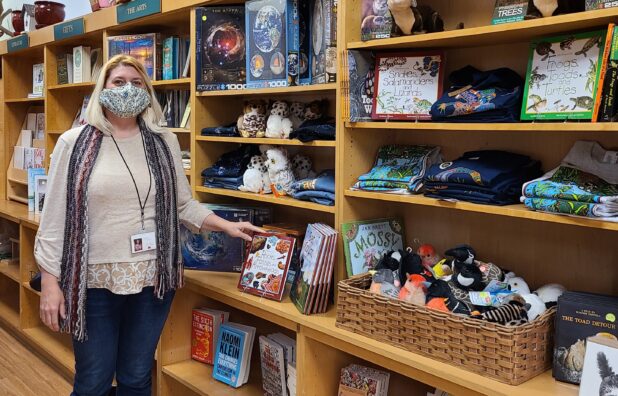
Roxborough’s Michelle Havens Welcomes You to the Schuylkill Center
If you’ve visited the Schuylkill Center on a weekday, chances are you’ve met Michelle Havens, our receptionist, office manager, and gift shop manager. At the center for more than five years, Michelle has deep roots in our community, as she is a third-generation Roxborough resident.
Michelle has lived in Roxborough for most of her life. Born at Roxborough Memorial Hospital, she grew up on Domino Lane, attended Shawmont School, and even lived in the Scout House off Henry Avenue in her 20s. As a child, “I used to walk from Domino Lane to the Andorra Shopping Center,” she told me, and fondly remembers the Clover there not far from the movie theater. “And Ivy Ridge was way different too; Target was an A&P, and there was a movie theater there too. You could walk so many places and not have to worry about it,” she continued. “Everything was within walking distance.” And today? “It’s just way busier, more traffic, more everything.”
She also remembers playing along the trails of the Schuylkill Center. “This was the park on the other side of the Ridge from the Wissahickon,” she said, laughing. “I’d not only play here, but I came here on school field trips.”
Michelle loves Roxborough’s many greenspaces, and she also “loves the nosiness of the neighbors. Everyone knows what’s going on, so it’s got a small-town feel; we look after each other. But that’s also a downside, that everyone knows what’s going on!”
She’s become active in the Upper Roxborough Civic Association, joining its board two years ago, and worries that the civic’s work “is getting busier now with so much building going on. For the civic, “keeping up with COVID is a little hectic, and makes things much harder. We can’t meet in person, so it’s tougher to get information to people and get their feedback. But we’re still doing it.”
I asked her what Roxborough should know about the Schuylkill Center. “Some people aren’t aware of what we do back here, and some people are just afraid to find out—maybe they’re too set in their ways. But we’ve got great hiking trails that connect to the bike trail, and you can head north or south along the trail. We’ve got great ponds, and great views of the Schuylkill River. It’s just a great place to get away—you can lose yourself in the woods without really getting lost. And you can partake in our programs!”
Michelle noted that many people “are surprised that we’re not supported by the city,” and she’s right. The center is privately supported, is not part of Fairmount Park, and receives no city funding.
As the front desk receptionist, she’s met a wide variety of people– and living things. “I came in one day to find a flying squirrel sitting on the seed cart in the lobby. I mean, where else can you find that?” She’s seen great blue herons fly by the front door, and she’s among the handful of staff who have seen coyotes. “I’ve seen a lot of them outside,” she recounted, “and have heard them some evenings too.”
She’s also met a lot of interesting people. “One Saturday,” she said, “an older visitor came who used to live in a house above Wind Dance Pond,” the Center’s largest pond. “She was in her 80s or 90s, grew up there, and really wanted to see the pond.” Wind Dance is the pond visible from Port Royal Avenue, and her home, long gone, was on that road back in the day. “Everyone who comes is interesting; everyone has a story,” she offered.
But the big downside of being our receptionist is facing the public in a pandemic. “That isn’t something everyone wants to do, “ she confessed. “Last year when we started preparing for summer camp and the prospect of visitors returning, I was nervous about people following the mandates and guidelines. Prior to COVID, people were constantly coming and going, chatting at the entrance and hanging out. I was concerned about the risk of exposure.
“For the most part, “ she continued, “everyone has been great with masks and distancing. Many of our visitors have been grateful to have a place to come to safely. As much as I worried about exposure, even these brief interactions with visitors allow me to feel some semblance of normalcy. It’s a connection to other people in a time where many are unable to have that.”
Michelle runs our gift shop, which features “an assortment of nature, local, and eco-friendly products, a little something for everyone.” Of course it features the best bird seed around, plus lots of bird feeders and other products that bring nature into your yard. Members get a discount, (hint, hint), a great reason to join.
She has raised two kids in her Upper Roxborough home—a fourth generation—and both are enrolled in college locally, one in environmental studies and the other in computer science. “I’ve got one green and one techie!” Her green child has worked in our Summer Camp and substitute teaches in our Nature Preschool, so the Center has been a family affair as well.
To her neighbors, she invites everyone to visit, to “get out and enjoy the break in the weather. Not many nature centers are open right now, so we’re lucky. We’re following all the rules, but we’re open!”
Michelle, all of us here thank you for so warmly staffing the front desk at such a ridiculously challenging time. We’re in your debt.
—By Mike Weilbacher, Executive Director
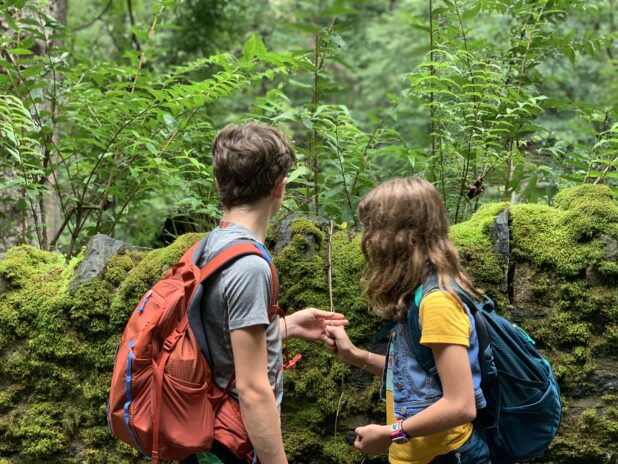
A Reflection on Making Space for Us
In my role as the Environmental Art Intern, I had the great opportunity to go through each and every one of the photos that were submitted to the amazing kaleidoscope of nature in the exhibition “Citizen’s Eye.” In the process of sorting through them, I had time to reflect on these snapshots, and on my own experiences in the outdoors throughout the pandemic. While there are many beautiful and eye-catching images, the ones that stood out to me most were those that documented time spent with other people. When I reflect on the time I spent outside over the last year, I am reminded of the close friends and family that I share these memories with. In a time of being hyper-aware of the spaces around us, nature provided a refuge and became the setting for all kinds of gathering. A place where we could still spend time with each other while also maintaining the distance we needed apart from each other to be safe and respectful.
What I see when I look through these images is a process of placemaking. Each photograph documents a way in which we are embedding emotional significance and new meaning into our natural environments. When we give these spaces new life, making them significant locations for living, gathering and communicating, we have transformed them into a place. While indoor spaces closed their doors to gathering, we turned to the outdoors to create new places to create memories. Celebration, exploration, connection, learning, mourning and many more rituals all took place in natural environments. Restaurants looked at parking lots and sidewalks and imagined new places for dining. This process was important in 2020. Natural placemaking reflected our needs to adjust to the circumstances, and it also reconnected us to a natural world that we are often at odds with. Whether or not you spent much time in the outdoors before the pandemic, your view of natural space definitely changed during the pandemic.
My hope is that post-pandemic, however that future looks, we will continue this process and continue to embed meaning into our natural spaces, whether it be the patch of grass on the sidewalk or the forest you went hiking through. Many were already doing this long before Covid-19 took ahold of our attention, but for others, time in quarantine allowed us to be more reflective and more presently focused on processes like this. We found a need to create new places, not by building or defining a space, but by being intentionally aware of what a space means to us and the memories that are connected to it.
I am glad to look through this collection of images and view the many ways in which we think about nature, both big and small, as important to our lives during a time of crisis and turmoil. As we imagine what futures await us, it is important to uphold these processes presently, and to imagine how natural space and its significance to us fits into these imagined futures.
—By CJ Walsh, Environmental Designer and former Art Intern at the Schuylkill Center.
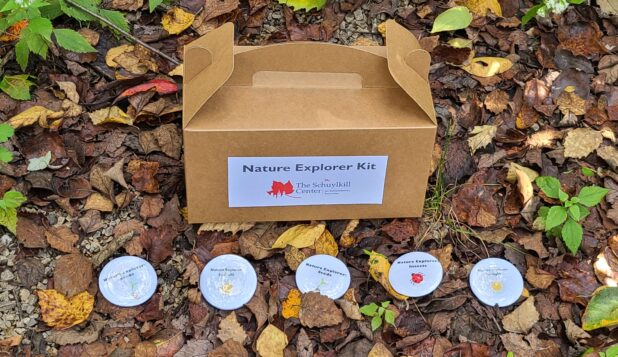
Schuylkill Saturday: Self-Guided Nature Exploration for Families
From the colorful autumn leaves to the fresh snow of winter to the budding flowers of spring and summer, discover the beauty and wonder along our trails in every season through this FREE weekly self-guided program. Pick up a nature exploration kit at our Visitor Center and then hit the trails with your family to complete the activities inside. Explorer kits can be picked up anytime between 10:00-12:00 on a first-come, first-served basis. Explorer kits have activities in them that are meant to be done along our trails and then returned when finished. All ages welcome. No registration required. Masks are required when picking up your kit and when at nature kit spots along the trails.





